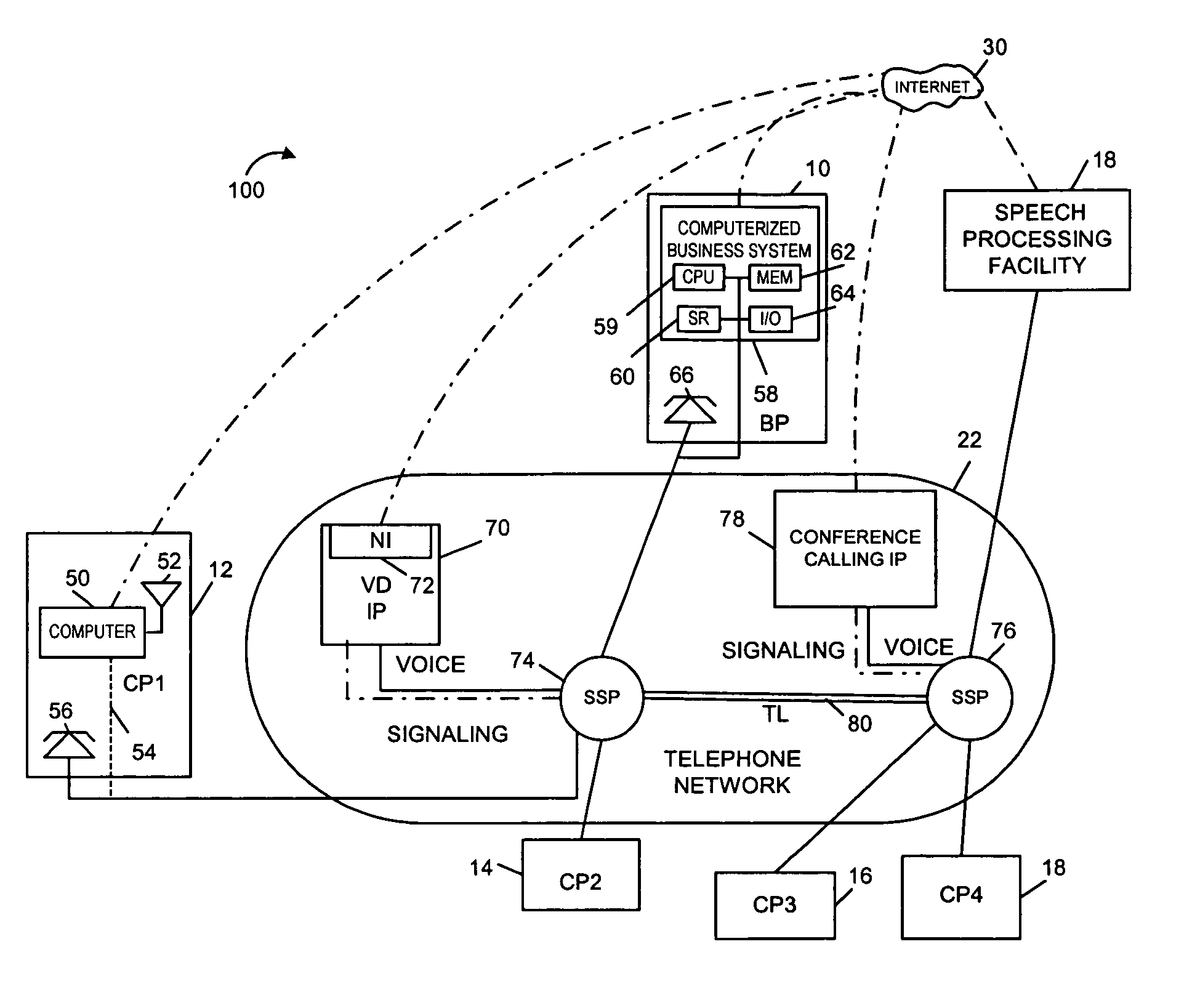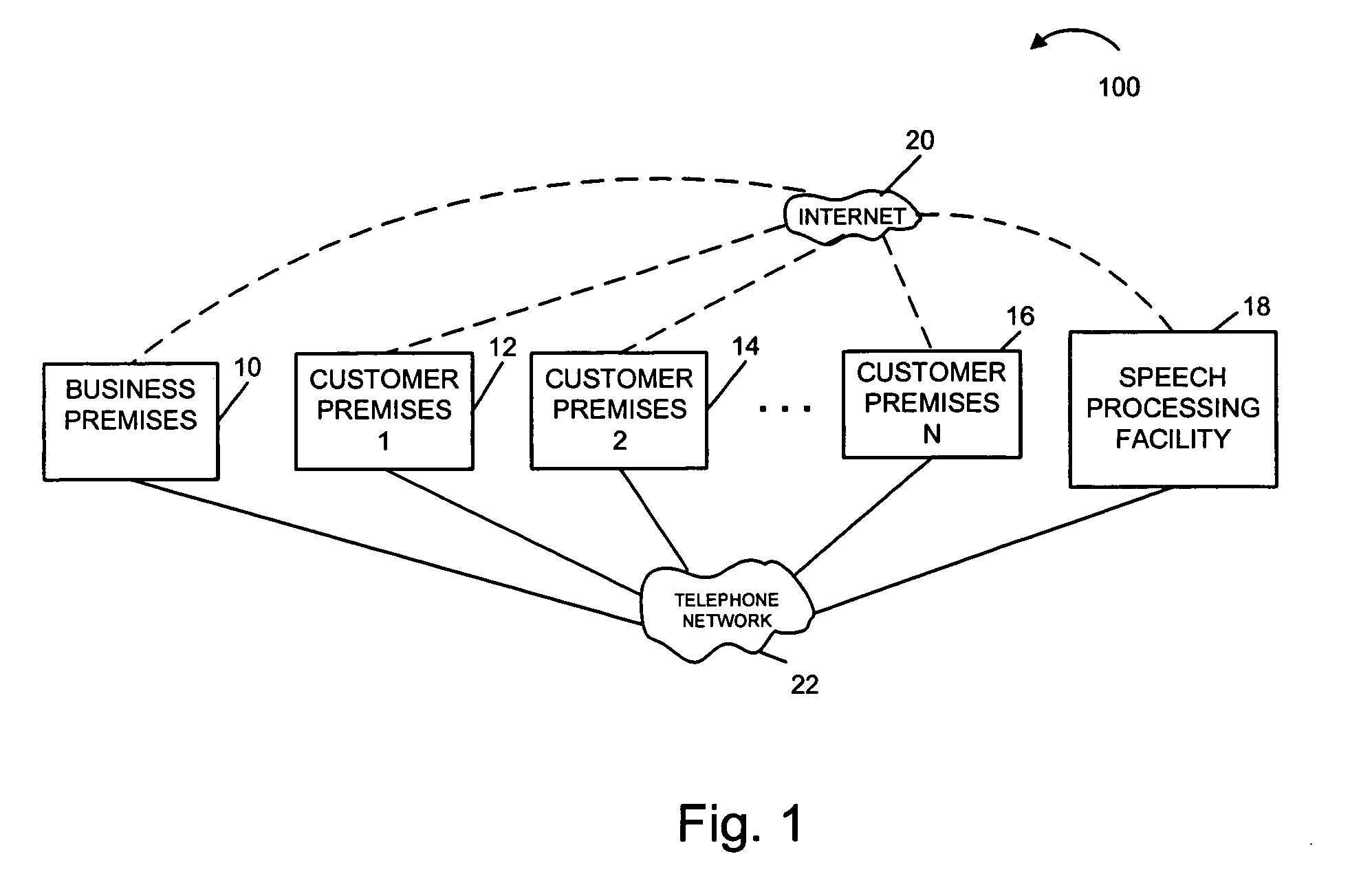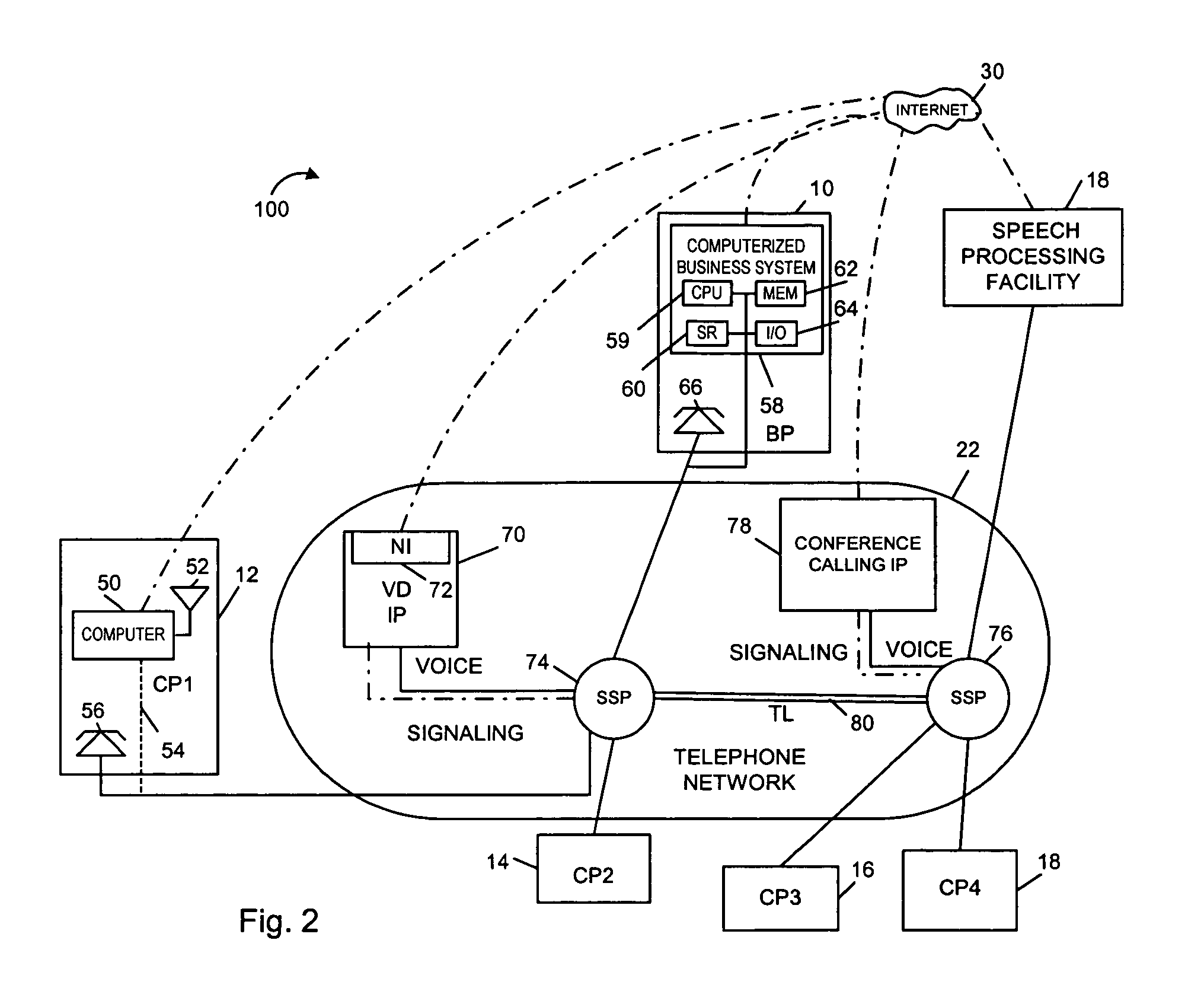Methods and apparatus for performing speech recognition over a network and using speech recognition results
a speech recognition and network technology, applied in the field of speech recognition techniques, can solve the problems of inability to store speech recognition models corresponding to large numbers of words or phrases, inability to perform speech recognition over a network, and large storage space occupied by individual speech recognition models, etc., and achieve the effect of improving the recognition results
- Summary
- Abstract
- Description
- Claims
- Application Information
AI Technical Summary
Benefits of technology
Problems solved by technology
Method used
Image
Examples
Embodiment Construction
[0044] As discussed above, the present invention is directed to methods and apparatus for generating speech recognition models, distributing speech recognition models and performing speech recognition operations, e.g., voice dialing and word processing operations, using speech recognition models.
[0045]FIG. 1 illustrates a communications system 100 implemented in accordance with the present invention. As illustrated, the system 100 includes a business premises 10 and customer premises 12, 14, 16. Each one of the premises 10, 12, 14, 16 represents a customer or business site. While only one business premise 10 is shown, it is to be understood that any number of business and customer premises may be included in the system 100. The various premises 10, 12, 14, 16, 18 are coupled together and to a shared speech processing facility 18 of the present invention via the Internet 20 and a telephone network 22. Connections to the Internet 20 may be via digital subscriber lines (DSL), cable mo...
PUM
 Login to View More
Login to View More Abstract
Description
Claims
Application Information
 Login to View More
Login to View More - R&D
- Intellectual Property
- Life Sciences
- Materials
- Tech Scout
- Unparalleled Data Quality
- Higher Quality Content
- 60% Fewer Hallucinations
Browse by: Latest US Patents, China's latest patents, Technical Efficacy Thesaurus, Application Domain, Technology Topic, Popular Technical Reports.
© 2025 PatSnap. All rights reserved.Legal|Privacy policy|Modern Slavery Act Transparency Statement|Sitemap|About US| Contact US: help@patsnap.com



